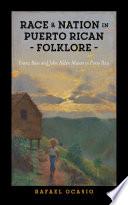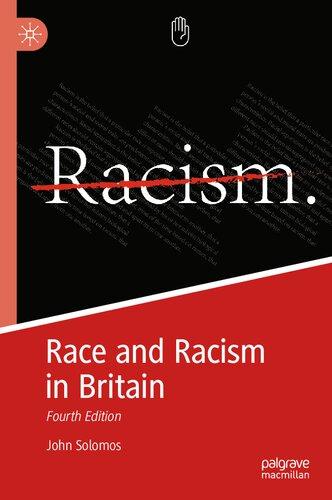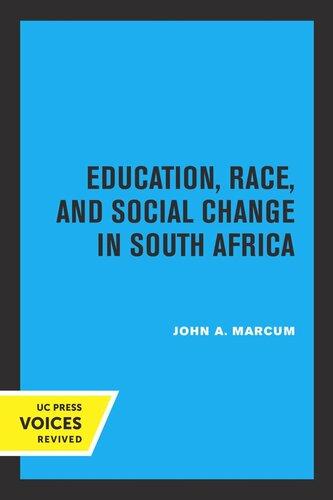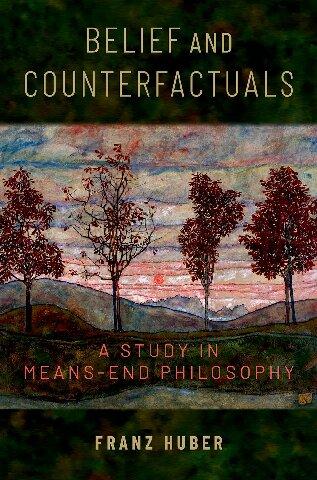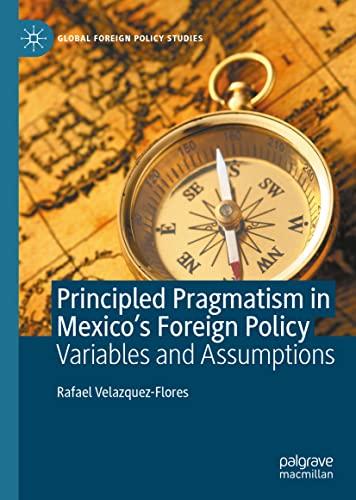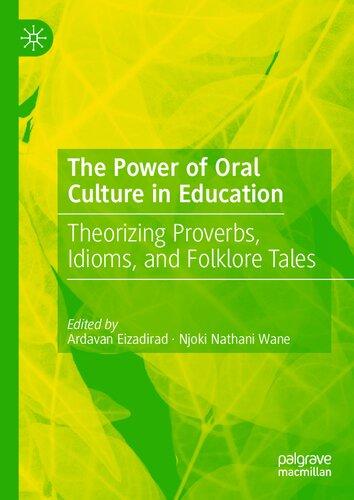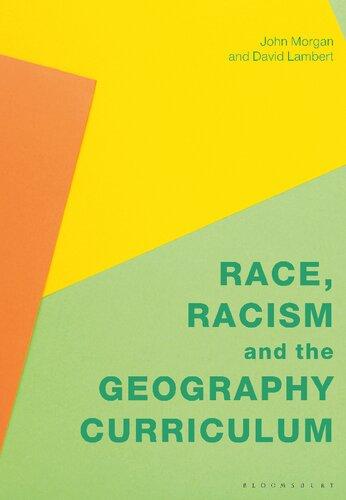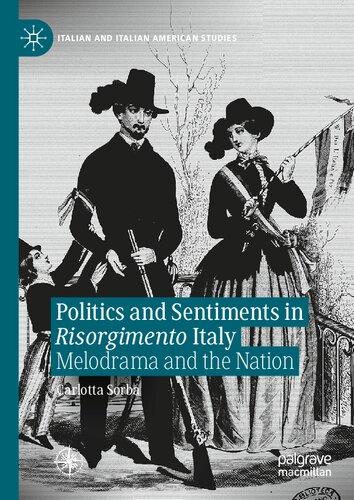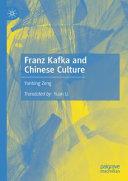Introduction
Retention and Reinvention of Puerto Rican Oral Folklore Tales
Do you know what people mean when they speak of “Our New Possessions”? What are they? Where are they? Why are men, in the streets, in the shops, everywhere, talking about them? Why are the newspapers full of articles in regard to them? Why are lawmakers at the capital devoting so much time and attention to them? Can you tell?
Marian M. George, A Little Journey to Puerto Rico for Intermediate and Upper Grades (1900)
My principal work here is to collect the folk-lore and I am getting an enormous pile, with the cooperation of the department of education. I have a pile sixteen inches thick now and probably get as much more before I quit. What I am ever going to do with it I don’t know.
John Alden Mason to Alfred L. Kroeber, January 21, 1915
Post–Spanish-A merican War U. S. Scientific Explorations
When the signing of the Treaty of Paris on August 12, 1898, ended the SpanishAmerican War, large numbers of Americans flocked to “Our Possessions,” the newly acquired Caribbean islands of Cuba and Puerto Rico, and to the Philippines in the Pacific basin. Extensive press coverage had produced a record number of readers who for the first time eagerly followed a media-dominated war through “reading newspapers (or looking at the pictures) more than ever before” (Collin 107).1 In search of an exotic geography, the first American civilian explorers wrote a large number of diaries and travelogues that served as formal presentations of these military-occupied territories. Their views were not broad; they either focused on the islands as commercial wastelands with great financial potential for U.S. enterprises or took a paternalistic attitude in hopes that a rising twentieth-century Americanmade technology would turn the “Spanish islands” into a showcase of modernity.
In the early part of the twentieth century, technology also allowed for massive and complex projects abroad, such as the Panama Canal, which, as Katherine A. Zien stresses, was hailed as “an example of social engineering’s triumph over tropical degeneration” (41). Along with Puerto Rico as part of the “Spanish Islands Empire,” the canal became a g reat symbol of the United States’ increasingly power f ul geopol itical dominance. Indeed, Peter James Hudson has traced the intricate ways in which U.S. federal policies facilitated the emergence of American banking as a powerhouse in the Caribbean after the Spanish-American War: “The War and State departments required fiscal agencies to support the infrastructure of US colonialism, and financial institutions were an impor tant conduit of colonial policy and financial and commercial diplomacy” (6).
Although the implementation of the Foraker Act in 1900 provided Puerto Ricans with a civilian government, it also imposed a governor appointed by the U.S. president. Thus, the island was subjected to congressional laws as “federal regulations pertaining [to] governing of Puerto Rico responded to economic needs of an American market” (García Mu ñiz 47). The numbers of the earliest American investors, as historian Andrés A. Ramos Mattei has documented, were high. Some three hundred were already on the island in 1898, even before Spaniards were mandated to evacuate the island (54). This early commercial interest in Puerto Rico may explain in part the high number of travelogues and diaries published in the United States. Intended to be more than literary texts, travelogues written about Puerto Rico emphasized the economic benefits of maintaining the island u nder American pol itical control. A newly constituted “Porto Rico” was an outstanding booty, as Murat Halstead observed in The Story of the Philippines and Our Possessions (1898): “[Puerto Rico] falls into our possession without the impoverishment and demoralization of the devastation of war— one of the fairest gems of the ocean” (577).2
After Cuba’s independence in 1902, Puerto Rico remained a colorful yet backward representative of an “island” culture, strikingly di fferent from U.S. modern practices that attempted to transform ancestral “Spanish” cultural practices (Anazagasty Rodríguez & Cancel, “Los textos” 38). Lured to the island as the only Spanish-speaking Ca r ibbea n U.S. possession, American travelers wrote about local traditions and often commented upon unique race-based social types.3 Their curiosity led them to capture a native Puerto Rican identity doomed to disappear amid the aggressive Americanization campaign leading to an eventual annexation of the island.
The Scientific Survey of Porto Rico and the Virgin Islands as an Organized Colonial Laboratory
Notable American academic institutions performed scientific fieldwork in Puerto Rico. In 1913, the New York Academy of Sciences, cohosted by the Puerto Rican government, started the Scientific Survey of Porto Rico and the Virgin Islands,
a comprehensive study of the islands’ geology, paleontology, botany, zoology, and anthropology. The obtained data have been described “to this day, as one of the most complete descriptions of the natu r al history of any tropical area ever attempted” (Figueroa Colón viii). The findings of subsequent scientific excursions were published from 1919 u ntil 1941 as Scientific Survey of Porto Rico and the Virgin Islands. Its multidisciplinary impact upon developing branches of science in Puerto Rico was long-standing; however, it has also been labeled as part of an initial “fase de intervención cultural” (phase of cultural intervention; Iranzo Berrocal 21).4
The Scientific Survey included extensive documentation of anthropological and oral folklore components u nder the direction of Franz Boas (1858–1942). An outstanding anthropologist and ethnologist with an international reputation, Boas had become “the most impor tant single force in shaping American anthropology in the first part of the twentieth century” (Stocking 1). He was also a pioneering scholar in the field of folklore studies (Darnell, “Franz Boas” 3; Krupat 82; White, Ethnography and Ethnology 5; Zumwalt, American Folklore 69).
Boas arrived on the island in May 1915, staying for a period of about five weeks. His visit went unnoticed by contemporary readers of Puerto Rican newspapers, including Puerto Rico Ilustrado, an arts and literature weekly magazine that regularly documented the arrival of impor tant international personalities. There are no surviving fieldwork notebooks, and most of his biographers have either ignored his trip to Puerto Rico or treated it as an afterthought in Boas’s busy international and national travel schedule.5 He was not in top physical condition, still recuperating from recent facial surgery to remove a cancerous tumor. Only close family members were aware of his weak physical condition.
The survey included field research in the areas of botany and entomology, zoological reconnaissance and entomology, geology, and anthropology and archaeology. Boas chaired the anthropological component, supported by a team of young, rising scholars: Herman Karl Haeberlin, John Alden Mason, and Robert T. Aitken. Their most critical contribution was the mapping of Capá, as the remains of an indigenous Ta í no ballpark site were known at the time. They are considered today to be part of the first wave of American anthropologists who arrived in Puerto Rico a fter the Spanish-A merican War (Anderson C órdova et al. 15). Their research has been challenged, however; most of them lacked basic linguistic Spanish competency, knowledge of previous bibliographical documentation, and general knowledge of Ca r ibbean history (Rodr íguez L ópez 30; Duany, The Puerto Rican Nation 60–61).
Boas had given Mason specific instructions for the identification of a par t icu lar type of cultural informant. Mason’s whereabouts on the island put him in contact with jíbaros, peasants who provided a variety of expressions of oral folklore, including hundreds of stories, conundrums, sayings, and popu lar poetry. They also uncovered samples of native musical forms, mainly décimas and aguinaldos
(Christmas songs). The resulting collection, as Jorge Duany described, “enshrined the mountain jí baro as the archetype of the folk. It thereby contributed to construct Puerto Ricans as a predominantly white population with strong ties to Eu ropean traditions” (The Puerto Rican Nation 83).
Boas’s Fieldwork in Puerto Rico
Boas’s projects in Puerto Rico fall into two distinctive scientific categories. He excavated indigenous Ta í no physical remains in Capá , located in the town of Utuado, on the island’s central highlands, reputedly at the heart of an “Indian” territory, which had already attracted the attention of fellow American anthropologists. A fter mapping and sketching complex courts for ball games and plazas skillfully connected through a street system, Boas made a formal proposal for turning Capá into a public educational park. His archaeological findings did not immediately catch the attention of the Puerto Rican government, however.
A second area of scientific data gathering in Puerto Rico included anthropometric research, a crucial component of Boas’s ongoing campaign to debunk the strong international appeal of a “unilineal evolution” (Rohner and Rohner xvi).
Writing to the American governor of Puerto Rico, Arthur Yager, on November 6, 1913, Boas explained his intention to produce controlled anthropometric measurements in order to explore “the effects of race-mixture with reference to form of heredity in man” and “the effect of tropical environment upon the development of man” (American Philosophical Society).6 With t hese data he also desired to address an unstated “number of exceedingly impor tant and attractive problems.”
Boas could have considered Puerto Rico a permanent site for anthropological and ethnographical fieldwork. In 1910 he had been involved in the founding of the International School of American Archaeology and Ethnology in Mexico City (Hyatt 115). His research at various geog raph ic al Mexican sites produced “Notes on Mexican Folk-L ore” (1912), among the first articles on Latin American oral folklore published by the Journal of American Folklore , of which he served as editor. Events surrounding the Mexican Revolution interrupted his work in Mexico in 1914 and led to the closing of the International School.
While in Mexico, Boas worked alongside young scholars who served as his assistants in the field. John Alden Mason (1885–1967), a young archaeologist, linguist, and folklorist, a fter receiving his doctoral degree from the University of California, Berkeley in 1911, joined Boas in Mexico between 1911 and 1912.7 Mason was a student of Alfred L. Kroeber, who, in turn, had been Boas’s student at Columbia University.
Mason’s Ethnographic Fieldwork: “Indian,” Jíbaro, and Afro–Puerto Rican Folk Cultures
Mason preceded Boas on his trip to Puerto Rico, where he arrived on an undocumented date in 1914. His first letter to Boas from the island, dated December 8, reveal an overly excited young scholar eager to start tackling several complex projects. He badly desired to serve his notoriously demanding mentor, who often ordered last-minute changes to grueling work schedules and physically demanding field work protocols. His exploratory excursions (gathering oral folklore and documenting archaeological sites) around the island were literally exhaustive. Mason also identified numerous male volunteers for Boas’s anthropometric measurements (mainly children and soldiers), and while performing that task he surveyed the rough mountainous areas of the Cordillera Central (Central Mountainous Range).
At the time Mason wrote his first letter to Boas from Puerto Rico, he had already engaged in “a twelve days reconnoisance [sic] and field trip to Utuado” (APS). This picturesque pueblo, a rural town located in Cordillera Central, had become for Puerto Ricans, the sentimental home of a peculiar type of rural culture, known as jí baro de la montaña (high ground peasant). The peasant culture of this iconic region was also well known for its rich oral folklore. Not surprisingly, Mason made Utuado his permanent home base. In his letters to Boas he frequently praised the Utuado Gibaro, his preferred spelling, while highlighting some local traditions and expressing admiration for the skillful abilities of jí baros to deliver oral folk stories. The end result, as it has been charged, produced a collection overwhelmingly focused on “forms of verbal art [that] enshrined the mountain jí baro as the archetype of the folk (Duany, The Puerto Rican Nation 83).
Mason did, however, also come to Loíza, a predominantly Afro–Puerto Rican fishing village on the northeastern coast, where he uncovered oral samples representative of a “Negro” type of culture. As he did throughout the island, in Loíza he collected oral poetry and songs, stories, and children’s rhymes and games. Of g reat historical value, he met a former enslaved individual, Melitón Congo, an old man who spoke to Mason about customs of the enslaved, mainly medicinal and religious practices that had survived a fter the abolition of slavery in 1873.
Surprisingly, the final publications made no indication of geog raph ic al or racial origins of any of the oral samples. More puzzling, none of the Loí za material was published, nor were the field notes made available to Puerto Rican scholars.
Mason’s Collection Process: Cultural Infor mants as Writers
The oral folklore project had the full support of Governor Yager, who was instrumental in helping Mason develop connections with administrators of the public school
system, who provided him direct contact with children in rural schools. Edward M. Bainter, Puerto Rican School Department director, facilitated the participation of hundreds of schoolchildren who were asked to write down oral samples as part of their school work. The decision to involve Bainter was controversial. He had pushed radical proactive measures for the establishment of English as the preferred language in the public school system, including a requirement that teachers develop working skills in the English language as a condition for the renewal of their teaching licenses. These policies incited frequent boycotts by teachers and students alike, leading to his eventual decision to quit his post in 1915.
Adults were also commissioned to write oral folklore samples. They were rural men of varying ages and from a variety of geog raph ic al locations. Mason’s preferred informants were, however, jí baro men from Utuado, as indicated in notations from surviving field notebooks. He also made transcriptions from reputedly well-k nown storytellers, using his own type of phonetic script that highlighted the linguistic peculiarities of jí baro speech. This interest in documenting jí baro phonology was an impor tant component of Boas’s ongoing collection of oral folklore among Antarctic Eskimo groups.
Mason kept Boas abreast of his busy research schedule. His rather large correspondence with Boas details the multifaceted compilation processes (children and adults as writers, as well as his own recording and transcribing of oral renditions of oral folklore) and some brief discussions about his own preferences in compilation. He was rather simplistic in his listing of his geog raphical explorations; t hose pueblos, although iconic in terms of rich regional oral folklore, remained mainly undescribed. His aloofness went against the American travelogues that often described with voyeur ist ic interest newly discovered cultural practices on the island.
In the end, Boas’s arrival in Puerto Rico took place at an undetermined date in late May, 1915. He did not take part in Mason’s ongoing compilation of oral folklore. Instead, Boas worked industriously on anthropometric field research with male children and men and on an archaeological dig of Capá ’s ballpark. His noticeable withdrawal from working on the oral folklore tier continued during the subsequent editing process, augmented by the addition of a dissenting copy editor.
Ignoring Ideological Differences during the Editing Process: The Language Issue
Folklorist and Spanish professor Aurelio M. Espinosa (1880–1958) served as the editor of all of Mason’s field notebooks. A proud native Nuevo Mexicano, although a native speaker of Spanish, he had no experience with or knowledge of jí baro linguistics. No scholar from Puerto Rico was invited to take part in either the collection or the editing of the oral samples, though. Nonetheless,
Mason had had the support of Puerto Rican folklorists, whose recommendations fully enriched the compilation process.
As a more significant oversight, in asking children to write in Spanish oral samples, the ideological implications of such a request were not considered. English, as the language of instruction, had been imposed upon them. Americans traveling throughout Puerto Rico in the early part of the twentieth century often reported that the teaching process was convoluted at best, and, controversially, it also generated demeaning reports on the socioeconomic conditions of jí baro children as members of an underprivileged social class.
Indeed, neither Mason nor Boas was concerned about the pol itic al scene that they encountered on the island in late 1914 and throughout 1915. In 1914, José de Diego, as spokesman of the Puerto Rican legislature, managed to approve an official declaration stating the bound a ries of a Puerto Rican nationality. General elections on the island were followed by official concerns about the serious legal limitations of self-governing placed upon Puerto Rico by the Foraker Act of 1900. Public discontent taken to the streets as political rallies and worker and teacher strikes, widely covered by newspapers, reflected a local preoccupation with expanding American political power over the island’s internal affairs. Although indicators of the island’s long-standing colonial background could be present in the collected samples, such sociopolitical indicators were completely ignored.
The Puerto Rican oral folklore is composed of hundreds of samples—riddles, Christmas carols, poetry, songs, and stories—a nd was edited in standard Spanish. Appearing in nine volumes in the Journal of American Folklore from 1916 to 1929, t hese publications were among the first and largest oral folklore samples in Spanish published by this distinguished journal. Except for the riddles— published many years later in book format as Folklore puertorriqueño: Adivinanzas (Puerto Rican Folklore: Riddles; Mason 1960)—t he oral folklore project remains unpublished in Puerto Rico.
The conclusion of such a monumental project took a toll on all participants. Although Espinosa maintained his commitment to edit all samples, his relationship with Boas was always formal, to the point that he never fully expressed his feelings about being a participant in this historical project. Espinosa did break up with Mason, whose professional relationship he never sought out.
In a more public stance, Boas withdrew himself from his professional association with Mason. Writing in an editorial for the Nation on December 20, 1919, he accused four anthropologists of espionage in Central American countries during the First World War. Although the names of the accused individuals were withheld, Mason was immediately implicated, leading to a controversial censure of Boas by the American Anthropological Association. However, Mason did maintain a public admiration for Boas.
Race and Nation in Puerto Rican Folklore reassesses Boas’s and Mason’s ethnographic and anthropological fieldwork in Puerto Rico within the context of ongoing American scientific projects abroad and against the political arena that they encountered on the island. As Jorge Duany has articulated in his groundbreaking study of Boas’s trip, this reputable scholar’s intentions reflected “ethnographic imperative to rescue the Island’s Hispanic folklore before the onslaught of Americanization” (The Puerto Rican Nation 62). Indeed, as I w ill highlight, their ample correspondence reflects that Boas expected Mason to collect a significantly large amount of oral folklore samples within a relatively short period. Their detailed letters describe Mason’s preparation prior to his trip to Puerto Rico, his busy whereabouts on the island before Boas’s arrival, and his tedious dealings with governmental and public figures while performing fieldwork. The collection procedures, which included native informants, children and adult men from rural areas, were also frequent subjects of their letters. In par ticu lar, details pertaining to a well-organized plan to have school children draft their own renditions of oral samples are discussed here, including my analysis of the ideological implications that, for the first time in literary history, jí baros were given the opportunity to act as writers of their own cultural practices.
Although not originally targeted as an impor t ant source of oral folklore, Mason scouted surviving slave customs and a strong mulatto (Afro-P uerto Rican) ethnographic heritage in the coastal town of Loí za. Neither Boas nor Mason was initially aware of Old Loíza (Mason’s preferred naming) which Mason targeted as his principal geog raphical site of a representative Puerto Rican rich black cultural heritage. Mason’s letters to Boas describing his whereabouts around this predominantly black area are, however, rather bland. He ignored any descriptions of Loí za’s rich popu lar traditions, such as manual artisan productions and musical per formances. Mason’s most groundbreaking finding was his documentation of Melitón Congo, who as a former slave born in Africa, provided Mason with a rich data of local cultural practices, mainly religious-based medicinal procedures and so called superstitions. My reconstruction of t hese data through Mason’s notes in surviving fieldnotes highlights the outstanding significance of Loí za as a notable cradle of a so called Afro-P uerto Rican culture.
The editing process was also well documented. Letters between Boas, Mason, and Espinosa clearly reflect not only their professional disagreements but ways in which they failed to understand the importance of the oral folklore samples as a reflection of a complex sociopolitical colonial history operating on the island. These letters provide an insightful look into a rather monumental task that, as I discuss, all parties pol itically and critically mishandled in one way or another. I will also underscore ways in which local scholars, historians and ethnographers, were heavi ly utilized as consultants of Mason’s fieldwork procedures, however, their impor tant input remained unacknowledged in the serial publications of
the oral samples. None of them were ever invited to participate in the editing process, a decision that could have avoided most of the ideological disagreements that occurred between Mason and Espinosa.
Within the ideological context of the earliest American scientific trips to Puerto Rico, I have two critical goals. First, this book documents a myriad of orga nizational details behind Boas’s historic visit to Puerto Rico. Although neither Boas nor Mason considered themselves travelers, at least not in the sense of those who came to the island in pursuit of experiencing a recently politically constituted “Porto Rico,” they closely followed geog raphical sites that American and foreign visitors had regularly commented upon. Indeed, first-person travelogues, historical accounts, and Puerto Rican cultural artifacts brought to U.S. anthropological fairs initially informed Boas’s and Mason’s knowledge of certain types of cultural in for mants. In par t ic u lar, the jí baro, as an emblematic inhabitant of the island’s campos, the untamed countryside, was designated as a repository of a vibrant identidad criolla , a Puerto Rican hybrid Spanish creole cultural identity.
A second goal is to trace in representative folktales t hose specific types of geographic settings, character types, and plot lines that reflect expressions of a national identity through jí baro culture. Folktales, which dominate the oral project, highlight iconic characters immersed in social and cultural para meters that describe the island’s long colonial history, a sort of psychological profile of a stubborn Puerto Ricanness defying an American pol itical intervention.
In their documentation of jí baro culture, Boas and Mason might have been following a similar intellectual project operating in Puerto Rico. Local literary writers, pol itical analysts, and politicians were si multa neously engaged with a pro-nationalist project in which jí baros, depicted as white people of Spanish descent, stood as representatives of a well-developed Hispanidad. As descendants of rural Spaniards, a hybrid race, la raza , not only reflected unique expressions of a developed national identity but also highlighted Puerto Ricans as culturally and linguistically di fferent from the newly arrived U.S. Americans. In reappraising jí baros as the uncontested symbols of a national identity, however, the Afro–P uerto Rican elements of the so- c alled Puerto Rican raza were obliterated.
Chapter 1, “Porto Rico as a Colonial Scientific Laboratory: Documenting Puerto Rican Oral Folklore,” highlights the ethnographical and anthropological components of the Scientific Survey of Porto Rico as part of the island’s increasing popularity as a stage for scientific exploration. Although without practical value for a fast-developing, heavi ly agrarian economy, t hese areas of investigation were designed to increase the national reputation of the New York Academy of Sciences through Boas’s public profile as an indefatigable traveling scientist. Indeed, “The Island of Porto Rico,” thanks to the Scientific Survey, took a forefront position in numerous U.S. scientific excursions a fter the Spanish-A merican
War. Popu lar interest in the island was already high, with frequent articles published in learning publications, such as National Geographic
Within the popu lar topic of racial connections with Puerto Rican cultures, Boas’s oral folklore stands out as the largest such project produced. It included a large number of informant adults and children from rural areas who wrote down their own material. Jí baro traditions shaped not only the content but also the themes of the folk material. The project, which was exclusively supervised by Mason, managed to produce an overwhelming number of oral folklore samples.
Chapter 2, “A Post–Spanish-A merican War National Identity: Editing Puerto Rican Folktales in a Sociopolitical Vacuum,” surveys the intellectual opposition that Mason and Boas were exposed to, particularly through public statements by Puerto Rican politicians and intellectuals concerned about the negative influence of American ideological and cultural policies upon native cultural traditions. Unbeknownst to Mason and Boas, key Puerto Rican politicians and writers were heavi ly i nvolved in public debates concerning the impact of American pol itical and social policies imposed on the island. One passionate topic in particu lar, the proposal to use English as the island’s official language, had also been highly debated by locals and by American travelers alike. Nonetheless, such contested sociopolitical issues were not considered to have a potential influence on the compilation of the oral samples or during the editing proc ess, given the impassioned partisan scene that both Boas and Mason encountered in Puerto Rico. There was yet another ignored fact. Mason would have come across a booming Puerto Rican nationalist literature, which advocated for an emerging national identity through documentation of native folklore. Although some of t hese native folklorists actually served as his consultants, they were not invited to work on the rather convoluted editing processes that eventually followed.
Chapter 3, “Jí baros’ Authorship through Literary Self-Characterization,” discusses the role of an emerging “jí baro literat ure” that, at the time of Mason’s visit, had become an integral component of the highly nationalistic discourse. Two critical a ngles explore outstanding characteristics of Mason’s oral samples. On the one hand, in serving as writers of oral folk samples, jí baros performed such a task for the first time in literary history, indirectly joining in an ongoing literary trend known as criollista , which since the beginning of the twentieth century had been exploring jí baro motifs while highlighting native creole elements. On the other hand, as writers, jí baros drew from themes, characters, and subjects that spoke to them within the harsh socioeconomic environment of the Puerto Rican countryside. One outstanding iconic character is the picaresque peasant boy, Juan Bobo, a mischievous child who often finds himself involved in borderline criminal situations from which he escapes by sheer maña , or luck.
Chapter 4, “Telling a Story about Class and Ethnicity through Fairy Tales, Cuentos Puertorriqueños, and Leyendas,” focuses on Mason’s compilation methodology, which was mainly Boasian in practice. It also included archiving jí baro linguistic expressions and assessing oral deliverance techniques, documentation lost today that I reproduce from his reports to Boas and letters generated during the editing process between Boas and Espinosa. These stories feature local folk types who exemplify par t icu lar cultural traits of the Puerto Rican campo, the countryside that was a setting of sentimental importance to the cultural informants. Traditional cuentos de encantamiento (tales that involve spells) display identifiable native cultural traits with plots that reveal local strug g les against economic scarcity found in the countryside throughout the early part of the twentieth century, gracefully overcome by fantastic interventions.
Rural cultural themes and motifs pertaining to religious practices are notable components of two categories of oral folklore narratives: cuentos puertorriqueños (Puerto Rican tales) and leyendas (legends). They clearly reflect a strong connection to jí baro traditions, particularly religious belief systems. “Bad men” turned into folk legends are common characters, such as the infamous Puerto Rican–born pirate Roberto Cofresí and other bandidos (bandits), a fixed, dangerous component of the Puerto Rican countryside throughout the nineteenth century and the early part of the twentieth.
Chapter 5, “An (Un)colored Puerto Rican Culture: Unpublished Negro Fieldwork in Old Loí za,” explores Mason’s fieldwork in Old Loí za, home of the island’s predominantly African-heritage population, located on the northeastern coast. At the time of his visit it was an iconic black geography, well known for its popu lar cultural traditions, including seasonal celebrations, referred to as afro-puertorriqueño. Although Puerto Rico was a stronghold for slavery during the colonial period, neither Boas nor Mason considered performing ethnographical research on the island’s surviving slave-based culture. Forty-one years after the abolition of slavery on the island in 1873, Mason witnessed a type of a “Negro” oral folklore.
His diaries of his transcriptions, which he described in letters to Puerto Rican anthropologist Ricardo Alegr ía in 1956 as “written phonetically in the local dialect,” included several poems in “presumably African Congo.” More importantly, he met an elderly man, whom he identified simply as Melitón Congo, through whom he came to know about local popu lar practices. He also documented generic data about religious customs, mainly the use of native plants that served not only as a type of green medicine but also as components of what he described as “witchcraft” rituals. None of this material was ever published, though I was able to reproduce it, thanks to his correspondence with Alegr ía.
Nonetheless, as an interesting literary coincidence, Boas might have recognized his oversight in not fully exploring the historic relevance of Melitón Congo’s
oral folklore and cultural testimony. In 1927, he served as Zora Neale Hurston’s mentor, supervising her oral African American folklore documentation, and according to Hurston, “I was to go south and collect Negro folk-lore” (Hurston, Folklore 684).
Chapter 6, “Tropicalizing the Puerto Rican Racial Past: The Quest of an Indian Area,” explores Boas’s two main disciplinary interests during his short stay in Puerto Rico. Although he was still recuperating from facial cancer surgery, as the letters from Mason reveal, Boas was physically engaged in field research excursions that took him to geog raphical centers seen as iconic representat ions of the island’s racial past. He had come to Puerto Rico with the specific goal to identify an “Indian area,” as he referred to an actual geography that was presumably still harboring indigenous Ta í no culture. This was in spite of concerted efforts— during conquests and colonization—to efface it. As today’s official narrative highlights, through that physical search Boas came upon Capá, the outstanding ballpark and notable Ta í no religious center, which he mapped for the first time in modern archaeological history. Nonetheless, Boas did not officially publish his findings at Capá. All data from that initial encounter, which took place “during the months of June and July, 1915,” were officially made public in publications by his field assistants, Mason, Aitken, and Haeberlin (Aitken 296).
Indeed, Capá caught Boas’s critical attention even a fter his return from his trip to Puerto Rico. Inconclusive findings prompted Boas to ask Mason to return to Puerto Rico for a second trip, which lasted from September 8, 1915 through early December, 1915. As their extensive correspondence reflects, Mason kept himself heavi ly i nvolved in field documentation of Capá. These letters reflect a young scholar involved in a project that he clearly understood as groundbreaking in Ca r ibbean archaeology and, most importantly, a key to his finding of his first professional academic job.
Boas’s interest in Puerto Rican anthropology plausibly stemmed from his early exposure to Ta í no archaeological collections at cultural fairs orga nized in the United States. One such event of international exposure was the 1893 World’s Columbian Exposition, which took place in Chicago, where Boas had a central role as a rising anthropologist. He created exhibits that displayed indigenous artifacts, including the presence of actual natives, who performed a teaching function while making accessible to an eager public unknown details about U.S. and international indigenous groups. In Chicago, Boas might have come across Taíno archaeological pieces for the first time.
Boas also had come to Puerto Rico ready to engage in a second scientific field project. He continued working rather feverishly on his ongoing anthropometric research, which had been an impor tant field of study and one not without controversy, as indicated by his involvement with national discussions on the current effects of new migratory waves on the ethnic makeup of the modern
United States. On the heels of his trip to Puerto Rico, Boas had been involved in a U.S. congressional commission, known as Dillingham, which from 1907 to 1911 considered the genet ic effects of newly arrived migrants, particularly t hose from Southern Eu ropean countries, including Jewish communities, upon the contemporary American racial makeup.
Ultimately, Race and Nation in Puerto Rican Folklore explores the pol itical scene operating in Puerto Rico at the time of Mason’s and Boas’s visits, one intended to reconstitute Puerto Ricans as prospective American citizens. Indeed, until the granting of American citizenship through the Jones Act of 1917, local political parties were actively debating the potential impact of an American citizenship upon a well-defined Puerto Rican nationality as individuals strongly identified with “Hispanic” cultural practices. Mason and Boas witnessed in late 1914 and throughout most of 1915 a convoluted and heated pol itic al scene, to say the least. Newspapers often covered the many strikes and acts of civil disobedience.
Boas, on the other hand, rarely made references to his trip to Puerto Rico in his ample correspondence with family members and friends. With his colleagues, reports about his findings in Puerto Rico were rather short and devoid of any excitement pertaining to his archeological or ethnographic findings.
While on the island, Boas clearly kept himself marginal to the ongoing pronationalist and anti-U.S. movements. His neutral stance would have seemed contradictory to Puerto Rican writers and politicians, who, a fter the instauration of the Foraker Act in 1900, were heavi ly and publicly involved in pol itical discussions centering around subjects of Boasian interest, such as la raza.8
Within today’s reassessment of Boas’s most lasting contribution, described as an institutional rejection of “nineteenth-century racist-evolutionist practices into a relativistic, culture-specific science” (Jonaitis 28), my book highlights the lost historical importance of the Puerto Rican oral folklore. Mindful that Boas’s scientific practices and data reports are often reexamined (Baker, Anthropology 158; Cole 3; Williams 33), I place his Puerto Rican oral folklore as an outstanding project within the ongoing debates of the intersection of science and politics. In par t ic u lar, I examine its intended effect upon discussions of national identity in the context of the island’s colonial history. It is my hope that once such contested pol itical issues are explored, the richness of the oral folklore collection w ill fi nally be appraised, and more importantly, the fact that jí baro cultural informants were writers w ill bring to the forefront this oral collection as one of tremendous relevance in a post–Spanish-American War Puerto Rican literary history.
Fi nally, within the field of Ca r ibbean studies, this book reverberates in regional discussions about the U.S. economic and political influence on regional popu lar cultures. Indeed, I was very mindful that in tracing the origins of Puerto Rican cultural icons I was treading in deep waters with multiple layers of colonial
histories. Born to peasant parents and part of the first urban generation born in San Juan, I heard countless anecdotes about their upbringing in rural campos, seemingly untainted by U.S. cultural influences. Their memories of a natu ral life exposed to the elements, like the idyllic view of Mason’s, contrasted with their recognition that they too were exploited as destitute farmers, barely surviving in a plantation system that could be traced to Spanish colonial times.
The ultimate goal of this book is to offer a personalized view of certain surviving cultural elements present in today’s Puerto Rican raza. As was the case of the thousands of jí baros who left for the United States throughout the late 1930s, my family brought to San Juan a type of jí baro culture that as a child I came to both love and hate. To this day my mother’s favorite meal includes boiled roots that, if given a choice, I forgo for a more “modern” dish. Through her stories of her father, whom she often described as “más negro que el carbón” (blacker than coal), I knew that not all jí baros were the traditional, white, Hispanic-l ike figures often depicted by artists like Ramón Frade. Still imprinted in my mind is the jí baro music that my father loved to hear—behind closed doors, of course, because my siblings and I considered it so “pasada de moda” (old-fashioned). All of t hese dissimilar elements, as scholars and literary writers throughout the Ca r ibbean have denoted, make for a vibrant, trans- C aribbean culture whose function transcends enjoyment of social leisure to provide vehicles of pol itical expression, just like its initial models did.
Porto Rico as a Colonial Scientific Laboratory
Documenting Puerto Rican Oral Folklore
Porto Rico is the most eastern and the smallest of the Great Antilles, being 500 square miles less in area than Jamaica. It is 95 miles long, 35 miles wide, and has an area of 3,668. The coast-line is about 360 miles in length. Its area is 300 square miles greater than that of Delaware, Rhode Island and the District of Columbia combined, 300 square miles less than that of Connecticut. At the same time, it is the most productive in proportion to area, the most densely settled, and the most established in its customs and institutions.
Robert T. Hill, “Porto Rico” (1899)
Among the sibaros [sic], or sallow people of today, one rarely sees a physical trace of Indian descent, although in their mode of living much of Indian character exists.
A. D. Hall, Porto Rico: Its History, Products and Possibilities (1898)
After the Spanish-A merican War, Puerto Rico had a privileged position as a scientific laboratory that supported U.S.-sponsored colonial projects. Further, scientific publications had become rather popu lar in the United States, where readers were eager consumers of data available at affordable prices in print magazines like National Geographic. Scientific articles had a g reat impact upon congressional policies, often used in the legislation of a rising U.S. “Island Empire.” In addition to the dissemination of research findings, t hese publications covered scientific excursions to the newly acquired U.S. territories, which also yielded the first visuals of natives as prospective Americans. The handling of the images of the “colonized” was openly tainted, however, as part of a process that Guillermo Iranzo Berrocal considers to be the “marginalización del ‘Otro’ colonizado” (the marginalization of the colonized “Other”; 9). Through
“omisión y selectividad” (omission and selectivity), it produced an “efecto de hacerle invisible frente a sus protagonistas y cualquier observador” (effect of making them invisible before their protagonists and any other observer; 9).
This chapter has a twofold purpose. First, it frames the anthropological and ethnographic components of the Scientific Survey of Porto Rico as part of the large and complex scientific exploratory trips that took place throughout the island. These explorations had clearly defined utilitarian purposes, as indicated by the active participation and support of the American-controlled Puerto Rican government. Second, it traces the initial, conceptual approach to Boas’s overzealous goal to produce one of the largest collections of oral folklore from Spanish native speakers on the island. He did not foresee, however, that this relatively enormous endeavor, which drew heavi ly f rom public schoolchildren as writers of the samples, intersected with ongoing ideological debates about the imposition of Spanish as the language of instruction. There was no acknowledgment of the impact of the current pol itic al scene upon the resulting oral folklore samples.
I argue that Boas’s project in Puerto Rico failed to attract national attention both in Puerto Rico and in the United States. His and Mason’s visit went largely unnoticed in the United States; while another, more attractive national figure involved in an international scientific expedition captured all of the national attention. Consequently, the resulting oral folklore publications remain effectively unknown.
The Island of Porto R ico in the U. S. P ublic Eye
This section highlights the island’s early positioning as a stage for scientific investigation. Although the Scientific Survey of Porto Rico attempted to characterize the island as a privileged place for rising twentieth-century sciences, the island was ultimately positioned as an untapped agrarian market. In par t icu lar, rural customs of the jí baro peasants of the hinterland would capture the American imagination, a thematic preference that heavi ly i nfluenced Boas’s and Mason’s ethnographical choices. Moreover, the failure of Boas’s trip to Puerto Rico can be partially attributed to a lack of a tropical exoticism more evident in other scientific enterprises, such as that of President Roosevelt, who coincidentally also became involved in a scientific trip to the Brazilian Amazon in 1914.
Puerto Rico as a Scientific Laboratory: National Geographic’s Publications
Scientific publications such as National Geographic featured articles on subjects related to the “American Island Empire,” as Susan Schulten proposed, that implied a strengthening of scientific fields, “just as a firmly grounded science might enhance the nation’s position abroad” (14). Their articles, Catherine A. Lutz and Jane L. Collins have indicated, contributed greatly to legal ramifications
in the handling of “Our New Possessions”; traveling scientists often openly “discussed the benefits of colonialism” (18). In eleven articles published in 1899, Puerto Rico’s natu ral wonders attracted the attention of business entrepreneurs whose importation of American technology had an impact upon rather backward agrarian traditions. National Geographic often featured articles related to the management and financial worth of the so called U.S. Island Empire. The large number of articles in this magazine not only reveal the role of t hese new territories in the strengthening of key scientific fields but also reflect their impact upon a rising imperialist empire, “just as a firmly grounded science might enhance the nation’s position abroad” (Schulten 14). The articles were too outstanding components of the handling of “Our New Possessions,” as traveling scientists often openly “discussed the benefits of colonialism” (Lutz and Collins 18). Puerto Rico was a notable stage for such scientific explorations, according to John D. Perivolaris, “an object of scientific knowledge in the ser v ice of colonization” (200). Geog raphical knowledge of the island, Perivolaris argued, “not only showcases the scientific acquisition of knowledge that accompanied the physical acquisition of the island itself but also the redefinition of U.S. boundaries in relation to its imperial competitors and new ‘possessions,’ which are presented as supplementing U.S. territory and resources” (201).
Perivolaris has extrapolated that American scientific explorations of the island served as a rational measurement of “the potential fruits of colonialism in anticipation of the United States’ declaration, beyond its pol itical interests, of its commercial hegemony in the Western Hemisphere, as enshrined in the Roosevelt Corollary to the Monroe Doctrine” (199). Schulten likewise argued that National Geographic “acted si multa neously as an organ of science and politics at the turn of the century, which suggests that the scientific enterprise of geography was itself bound up with national concerns” (7). This emphasis on physical geography was, as Schulten suggested, an impor tant component of the colonial project: “To be relevant and useful to both the natu ral and human sciences, geographers widened their charge to include not just the physical landscape but also assessment of human prog ress in that landscape” (12). Within t hose constrictive parameters, National Geographic did not cover sociolog ical data useful for readers’ formation of a Puerto Rican cultural profile that would be indicative of a perceived pol itical maturity (Duany, The Puerto Rican Nation 42).
“Our New Possessions and the Interest They Are Exciting” (1898), the magazine’s first article about Puerto Rico, treated the island as a colony with a high potential for economic impact. Transformation into a profitable financial enterprise, the writer seemed to imply, would result in radical changes that could eventually transform the island’s identity: “The productive capacity of the island can, it is believed, be greatly increased by the construction of railroads and roads in the interior of the island, which has now few wagon roads at any distance from the coast capable of use for transporting agricultural products” (Austin 32).
Indeed, Puerto Rico quickly became a notable target for economic development. Articles published in National Geographic stressed news covering specific examples of the “ human prog ress” in the Puerto Rican landscape and reported on the impact of American technology, which, in turn, led to the island’s commercial efficacy for U.S. commercial enterprises.
Jíbaros as Unsung Heroes of a Booming Agrarian Industry
An article published in 1906, “Prosperous Porto Rico,” reported that the railroad mileage “has about doubled since American occupation” (Grosvenor 712). There were significant examples of efficient American agricultural practices and technology: “Mules, traction engines, and automobiles have supplanted the oxen and carts. The trolley car has also been introduced” (712). But l ittle attention was given to the human elements, mainly jí baros, behind t hese successful American enterprises.
In 1913, William Joseph Showalter, writing for National Geographic, praised American technology for turning formerly impoverished peasants into healthier and thus more skilled peons. Jí baros were responsible for the increasingly impor tant American-fi nanced business of exporting tropical produce that had, at the time of the article, dominated the production of other, larger Latin American countries: “Little Porto Rico is so small that it could be buried in a single Central American lake; it would take 57 islands of its size to equal Central America in area, and yet Porto Rico produces more foreign trade than all Central Amer ica together from Tehuantepec to Colombia” (227). Showalter saw proof of a growing industry in “sugar fields, where four tons of sugar are produced where one was a dozen years ago” (228–229). Other local produce with export value included coffee, oranges, pineapples, and grapefruit, leading many to believe that Puerto Rico was “destined to become a great competitor with Florida and southern California in supplying our tropical and semi-t ropical fruits” (229).
Despite the positive media coverage of a booming agricultural industry in Puerto Rico, jí baros were seldom described. Instead, positive descriptions of bountiful produce exported to the United States took center stage. An article by Secretary of War William H. Taft, “Some Recent Instances of National Altruism,” pointedly failed to mention the Puerto Rican peasant. Instead, he emphasized that “the wealth of the island was directly dependent upon the cultivation of the soil, to cane, tobacco, coffee, and fruit, for which we in Amer ica provide the market” (433). Puerto Rico’s value to this “American market,” Taft summarily concluded, was the result of “our fostering benevolence,” a seemingly vague reference to federal legislation concerning tax regulations of Puerto Rican exports to the United States (433).
This benign colonial platform did not produce, as an American reader might have thought, a better life for Puerto Ricans; rather, as Taft proudly concluded, it resulted in an increase in wealth for U.S. investors: “At the date of the American
occupation the estimated value of all agricultural land was about $30,000,000. Now the appraised value of real property in the island reaches $100,000,000” (434). The secretary of war’s statement confirmed Puerto Rico’s wealth. Symbolically, it was booty from the war, a settlement, in part, of the Treaty of Paris (Soto 176).
The Scientific Survey of Porto Rico: Initial Organization
Scientific field research in Puerto Rico, which had significantly increased a fter 1901 with the visit of archaeologist Jesse Walter Fewkes (1850–1930), among the first American scientists to perform fieldwork on the island, initiated “an ideal opportunity to push the frontiers of social science beyond the mainland” (Duany, “Anthropology” 35–36 and The Puerto Rican Nation 43). Ultimately, as Pagá n Jiménez and Rodríguez Ramos categorically concluded, t hese research trips produced reports that provided the federal government “sobre algunos aspectos estructurales de la sociedad puertorriqueña para así facilitar la administración de su nueva colonia” (knowledge on some structural aspects of Puerto Rican society in order to facilitate the administration of its new colony; 18).
The Scientific Survey of Porto Rico brought together a team of scientists organized by the New York Academy of Sciences. Founded in New York in 1817 as the Lyceum of Natu ral History, this long-standing scientific organi zation reestablished itself as the New York Academy of Sciences in 1876, seeking to accommodate the newest changes in American scientific societies (Baatz 118). As a mega multidisciplinary project, the Scientific Survey would establish the New York Academy’s strong influence on the local and national scientific community during the first part of the twentieth century.
Earliest Scientific Trips to Puerto Rico
The New York Academy of the Sciences had already been instrumental in facilitating the first scientific trips to Puerto Rico. Its first recorded trip was noted on March 26, 1902, at a meeting where L. M. Underwood reported on his reconnaissance trip to Puerto Rico and to Saint Kitts (“On River Banks”). By 1906, the Journal of the Botanical Gardens began publishing accounts of numerous exploratory trips to Puerto Rico. Four years earlier, however, Torreya: A Monthly Journal of Botanical Notes and News had already reported on botanical discoveries in Puerto Rico.1
The chair of the Scientific Survey was Nathaniel Lord Britton (1859–1934), the first director of the New York Botanical Garden and the brains behind the project. He intended to encourage new research that differed from “the Academy’s ordinary activities” (Britton, “History” 1). Julio Figueroa Colón indicated that Britton’s idea catered to promoting more cutting-edge projects that would highlight the academy’s standing as “one of the most prolific scientific institutions of the time” (vii).
Britton had traveled to Puerto Rico in 1913, and a fter meeting with faculty at various universities and with governmental officers, he was positive about his plans. Upon his return in October 1913, the academy approved plans to start field research the following year, beginning a schedule of trips that would take place over a span of five years (Baatz 205–206). The first team to leave was a group of zoologists affiliated with the American Museum of Natu ral History in the summer of 1914.
A botanical expedition followed in the early part of 1915 (Baatz 209). A concrete example of a complementary use of scientific data for utilitarian purposes, Iranzo Berrocal stressed, was Britton’s 1915 trip to Mona island, where he discovered large quantities of guano. That source of organic phosphates was widely used by Americans during World War I (21).
The Involvement of the Porto Rican Governor
Britton orchestrated a rather complex system of financial support, which included contributions from the Puerto Rican government. Following the model of Boas’s International School of American Archaeology, founded in Mexico in 1910, the Scientific Survey’s board involved the American-controlled Puerto Rican government early on as a financial supporter. A letter addressed to Dr. Arthur Yager, governor of Puerto Rico (1913–1921), dated December 22, 1913, introduced the project as a “geological, anthropological and natu ral history survey of Porto Rico . . . w ith a considerable collateral bearing on tropical biology and geology” (APS).
The letter, clearly a commercial contract, requested “further appropriations of $5,000 a year for field-work, reduction of observations and statistics, typewriting, illustration and printing, and supply some facilities for dredging by the use of a steam vessel for short periods of time.” In return, the academy committed to publish within five years the results of a series of expeditions, expected to collect “many thousand specimens of rocks, minerals, plants and animals . . . , a nd the preparation of descriptive accounts of the geology, meteorology, archaeology, botany and zoology of the colony.” The specimens were to then be returned to the island to form the basis of a natu ral history museum.
Setting Up the Oral Folklore Component of the Scientific Survey of Porto Rico: The Initial Role of Franz Boas
A striking characteristic of the collection of papers on the Scientific Survey of Porto Rico at the New York Academy of Sciences is the scarcity of documents on Boas’s role as the scholar in charge of archaeological and oral folklore fieldworks. The first reference to Boas’s trip to the island is a letter addressed to him on May 11, 1915, from H. W. Harvey, the Survey Board’s secretary, with information on how to document his travel expenses. Harvey was also concerned about Boas’s “physical trouble and operation,” in reference to his impending trip to the
